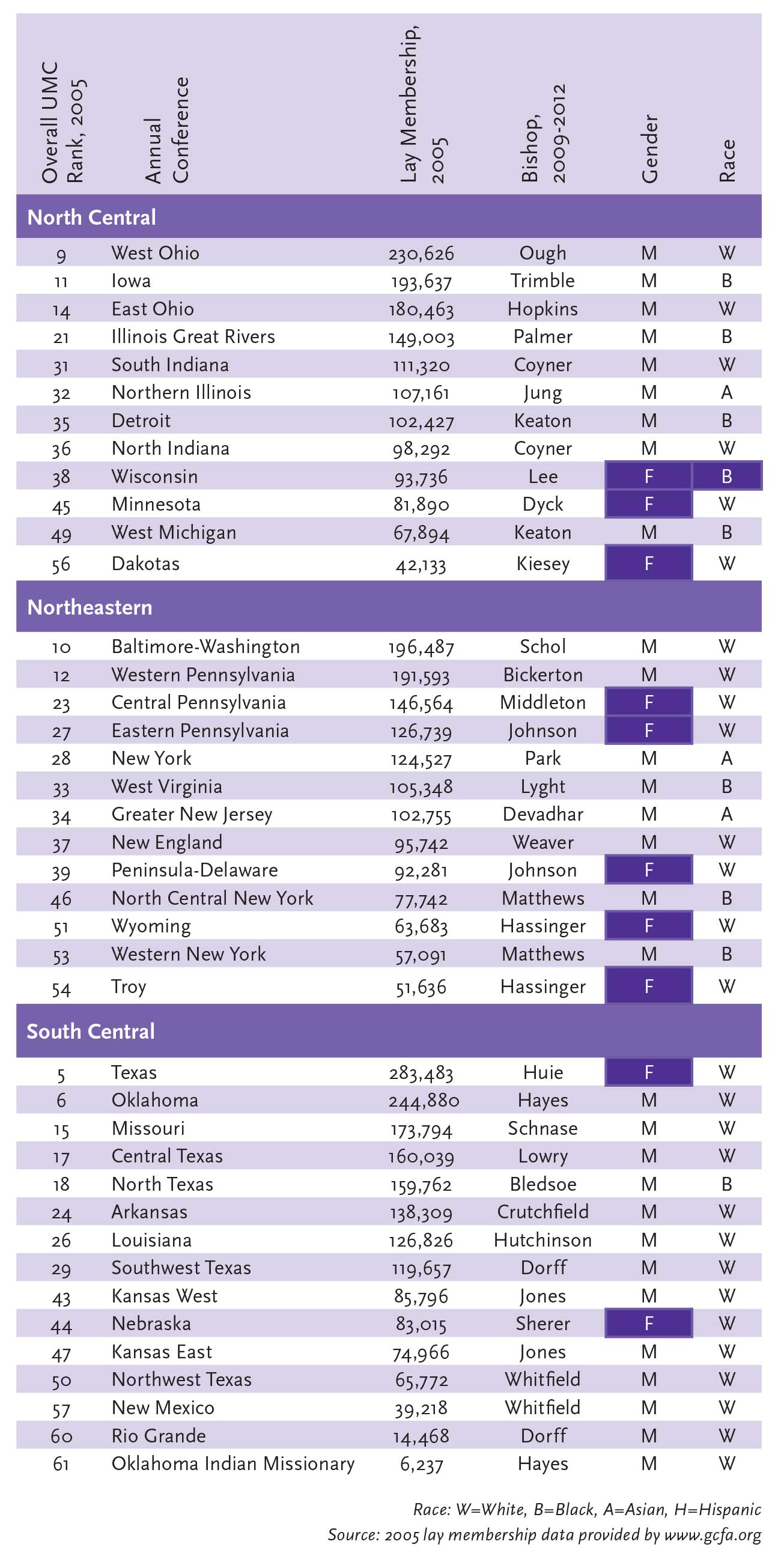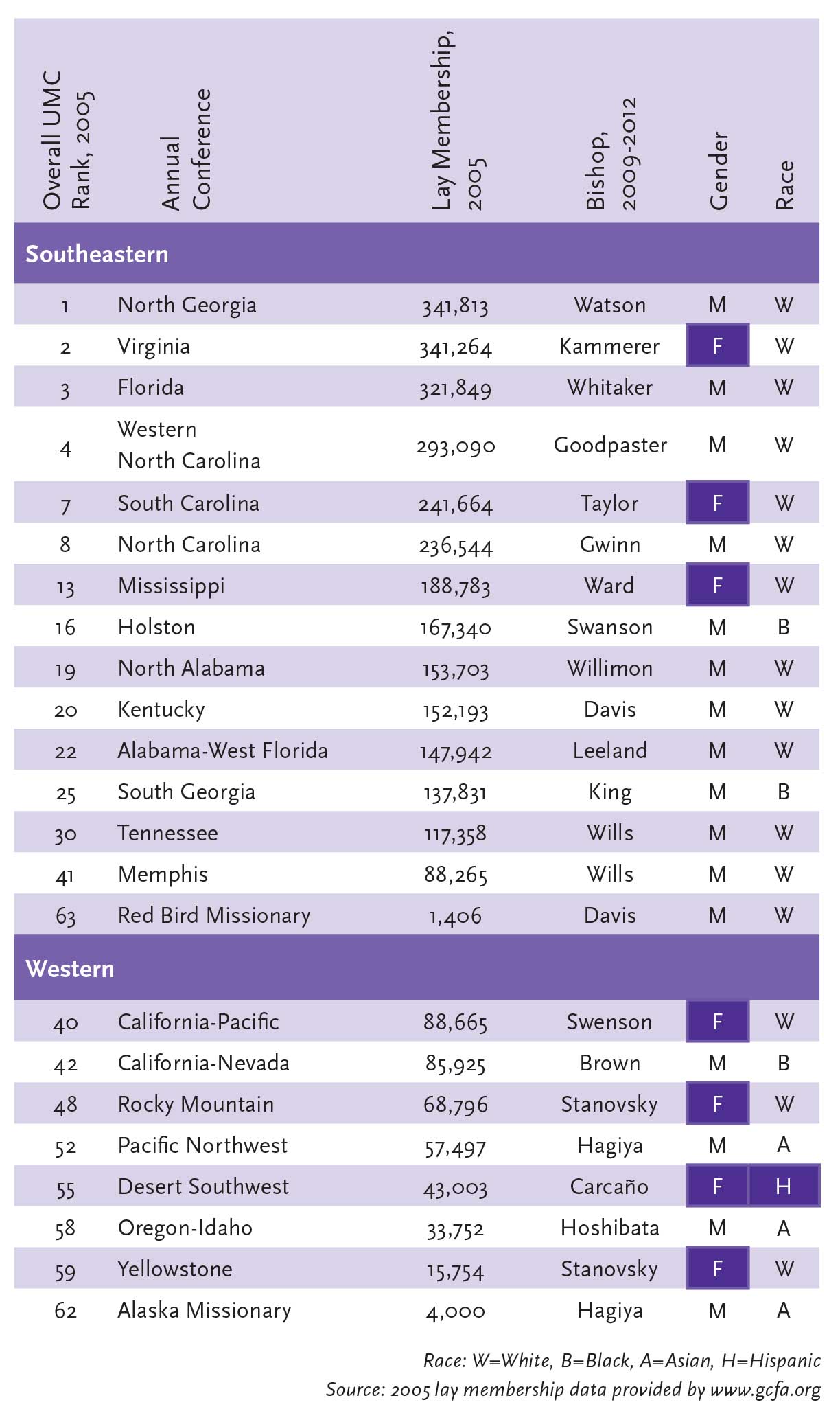U.S. racial-ethnic women bishops reduced by 2
By Craig This and Elaine Moy
The 2008 U.S. Jurisdictional Conferences elected eight clergypersons (six men and two women) to replace the seven retiring (and one resigning) bishops (five men and three women). As a result, the total number of active U.S. women bishops dropped by one, from 15 in 2005-08 to 14 currently.
There are 50 active U.S. bishops serving the United Methodist Church, all elected for life terms and assigned to specific episcopal areas. The U.S. bishops, plus 30 active bishops in the Philippines, Africa and Europe, and the 86 retired bishops constitute the international Council of Bishops.
Three women bishops retired as of this fall: Violet Fisher of the New York West Area and Beverly Shamana of the San Francisco Area (both African American), and Sharon Brown Christopher of the Springfield (Ill.) Area (who is white).
Delegates in this year’s round of voting elected two white clergywomen as bishops: Elaine Stanovsky, assigned to the Denver Area (Western Jurisdiction), and Peggy Johnson, assigned to the Philadelphia Area (Northeastern Jurisdiction). No women of color were elected by U.S. jurisdictions.
As a result, only two U.S. women of color serve as active bishops on the council: Minerva Carcaño of the Phoenix Area, a Latina, and Linda Lee of the Wisconsin Area, who is African American. The denomination has yet to elect a woman bishop from the Asian-American, Native American, or Pacific Island community.

Women bishops by jurisdiction
Women bishops comprise 28% of all active U.S. bishops (14 of 50). The North Central Jurisdiction saw its total number of female bishops drop from 4 to 3, while the remaining jurisdictions retained the same number of female bishops.
In terms of total denomination-wide membership, women account for more than 50% of U.S. United Methodist members. Overall, then, U.S. women are underrepresented at the bishops’ table. The one exception is the Western Jurisdiction, where half the current bishops are women and half are men.
In the North Central and Northeastern jurisdictions, male bishops outnumber female bishops 2 to 1. In the Southeastern Jurisdiction, male bishops outnumber female bishops 3 to 1, and in the South Central Jurisdiction male bishops outnumber female bishops 4 to 1. For the most part, these ratios remain unchanged from 2004.

Where do women bishops serve?
Within the South Central and Western jurisdictions, women oversee the largest episcopal areas (Bishop Janice Riggle Huie, Houston Area, and Bishop Mary Ann Swenson, Los Angeles Area). In the Southeastern Jurisdiction, Bishop Charlene Kammerer leads the Richmond (Va.) Area, the second largest area in that region, and bishops Mary Virginia Taylor (South Carolina) and Hope Morgan Ward (Mississippi), each serve areas of 100,000-plus members.
In the Northeast Jurisdiction, Bishop Jane Allen Middleton (Harrisburg Area) also oversees a 100,000-member area (Central Pennsylvania). However, in the North Central Jurisdiction, the three women bishops (Bishop Deborah Lieder Kiesey, Dakotas Area; Bishop Sharon A. Brown Christopher, Illinois Great Rivers; and Bishop Sally Dyck, Minnesota) administer three of the four smallest membership conferences.
Craig This, is data analyst in the Department of Institutional Research at Wright State University in Ohio.
Elaine May is associate general secretary of GCSRW
